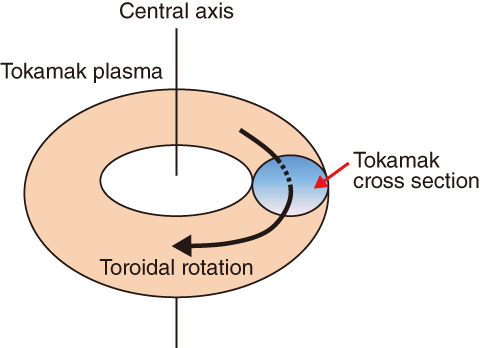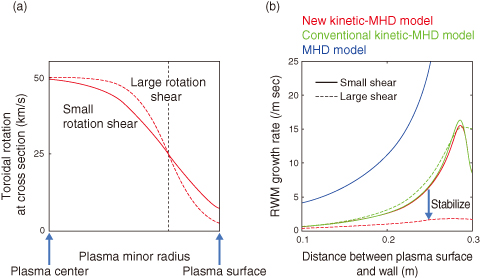
Fig.9-21 Schematic of the tokamak plasma and toroidal rotation

Fig.9-22 (a) Rotation profile in a tokamak cross section (b) RWM growth rate
The JT-60SA tokamak device, which is being constructed at the Naka site of JAEA, is designed to complement ITER research and establish a foundation for a tokamak DEMO reactor. In particular, the JT-60SA device aims to confine a high-pressure plasma, because fusion output increases with the plasma pressure. However, when the plasma pressure increases, a macroscopic instability known as a resistive wall mode (RWM) becomes unstable, limiting the achievable pressure value. Toroidal rotation (Fig.9-21) is known to stabilize RWM. Interaction between the RWM and the constituent particles’ motion has also been revealed to be important for the stabilization of RWMs.
To analyze the interaction between the RWMs and the particles’ motion, the kinetic-magnetohydrodynamic (MHD) model, which analyzes energy exchange between macroscopic MHD modes (such as RWMs) and constituent particles, has been formulated. In the conventional kinetic-MHD model, the background plasma is assumed to be static (no rotation). In this study, we shed new light on the fact that the constituent particles’ motion is affected by plasma rotation. For example, particle motion is affected by the Coriolis force, which is an inertial force appearing in a rotating frame working in the direction perpendicular to the rotational direction. In the rotating frame, another inertial force, the centrifugal force, additionally affects the particle motion. Considering these effects, we reformulated the kinetic-MHD model. The energy of RWMs was found to be strongly damped by resonance with the particles’ motion affected by Coriolis and centrifugal effects. Note that these effects were overlooked in the conventional model.
Based on the newly derived kinetic-MHD model, we have investigated RWM stability. Fig.9-22(a) indicates the rotation profile in a tokamak cross section, and shows that the rotation shear (gradient) is increased in keeping with the rotation amplitude at the location where the energy interaction between RWMs and particle motion is large. Fig.9-22(b) shows computation results of the RWM growth rate as functions of distance between the plasma surface and the wall. Since the arrow in Fig.9-22(b) indicates the increased rotation shear, we find that the RWM growth rates are decreased (stabilized) by the rotation shear. This result indicates that the control of the rotation profile is beneficial for stabilizing RWMs, which can contribute to the design of tokamaks with high-pressure plasma confinement.
The present study was partly supported by Japan Society for the Promotion of Science (JSPS) KAKENHI Grant-in-Aid for Young Scientists (B) (No.24760708).